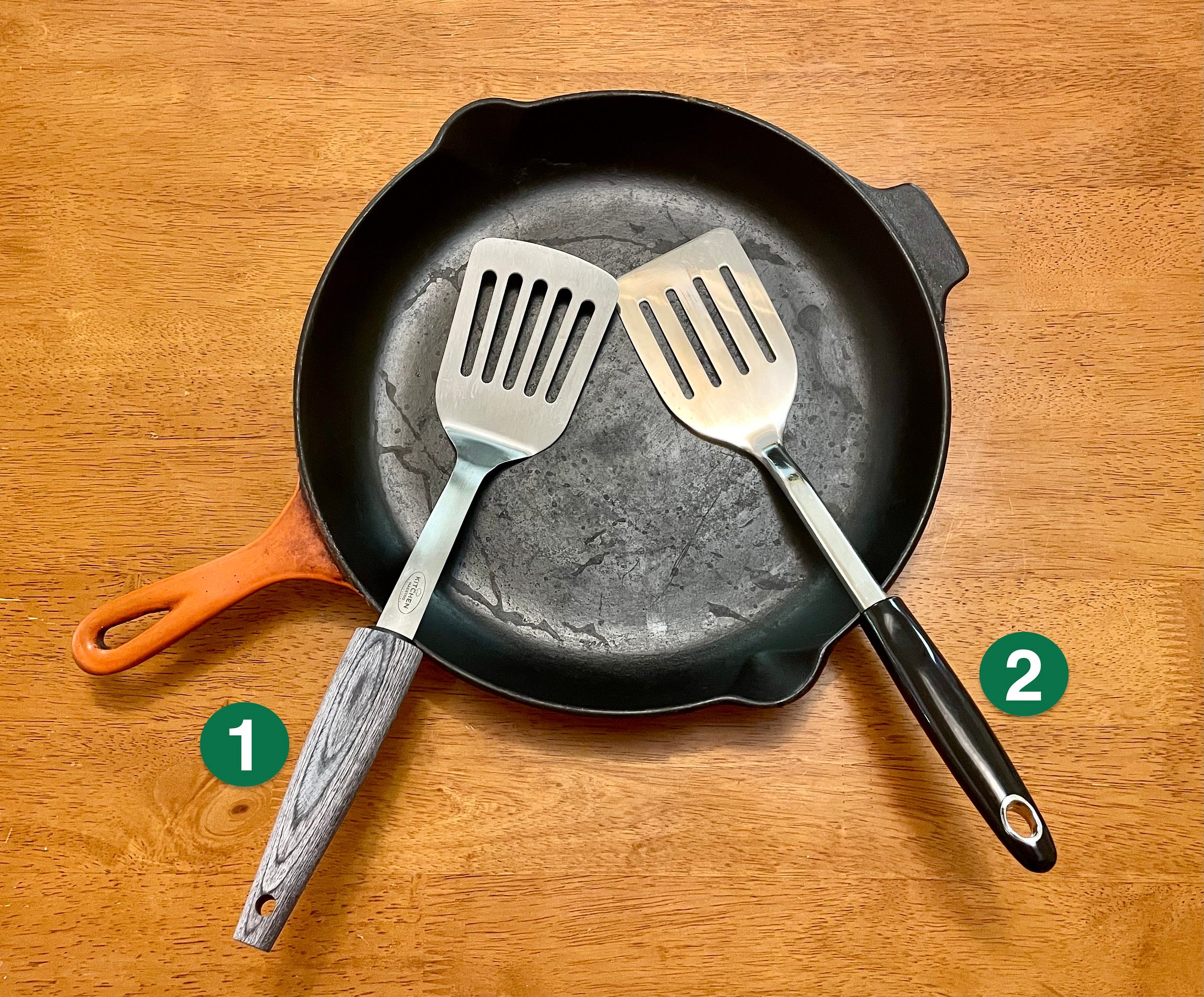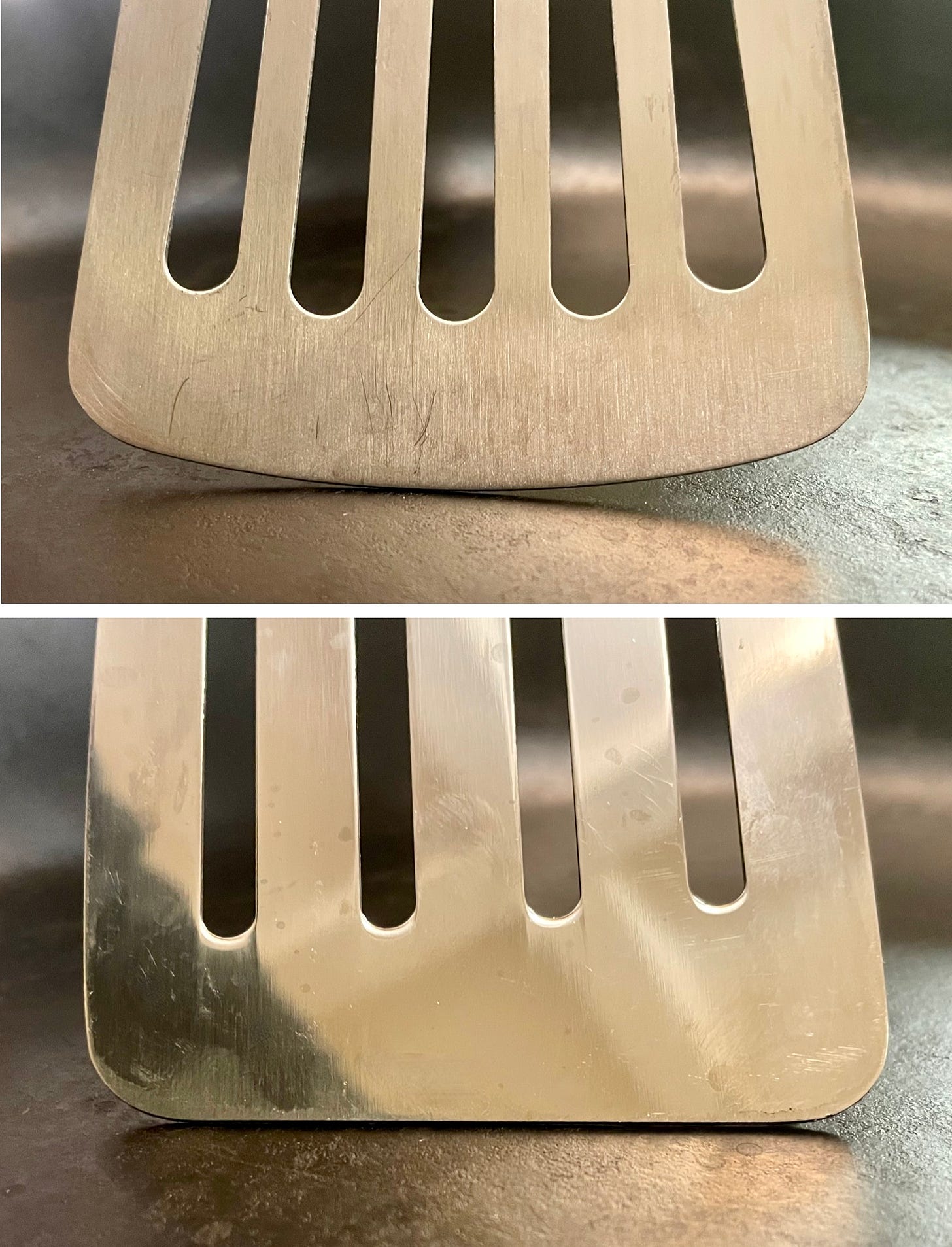An Easily Overlooked Detail of Spatula Design
You might think all spatulas are basically the same. But as I recently learned, that’s definitely not the case. Plus a key movie recommendation and more about airport wayfinding!
My spatula recently got ruined in a kitchen accident, so I walked around the corner to my local dollar store and bought myself a new one (spatula No. 1, above). But due to a design detail I’d never thought about before, I soon determined that I didn’t like the new spatula, so I had to go buy another one (No. 2). Can you spot the design detail that I found so irksome?
Before I get to the answer, let’s go over a spatula’s primary functions. As I see it, there are three of them:
Turning, flipping, or lifting things, like pancakes or burgers.
Moving things around in a skillet. (Tongs or a large spoon can also be used for this task, but sometimes the spatula feels like the best option.)
Scraping up the encrusted bits from the surface of a skillet or roasting pan. Sometimes this is just part of the clean-up process, but those encrusted bits can also be super-flavorful, so I often want to harvest them as a special treat.
If you look again at the header photo, you’ll see that the front edge of spatula No. 1 is curved, while No. 2’s is straight. The curved and straight edges are both fine for the first two tasks — turning items and moving things around. But but when it comes to scraping, I found spatula No. 1’s curved edge to be annoyingly deficient. That’s because when a curved edge meets a flat surface, only one point on the curve is making contact. By contrast, a straight edge can be flush against a flat surface, which makes for much more efficient scrape-age.




